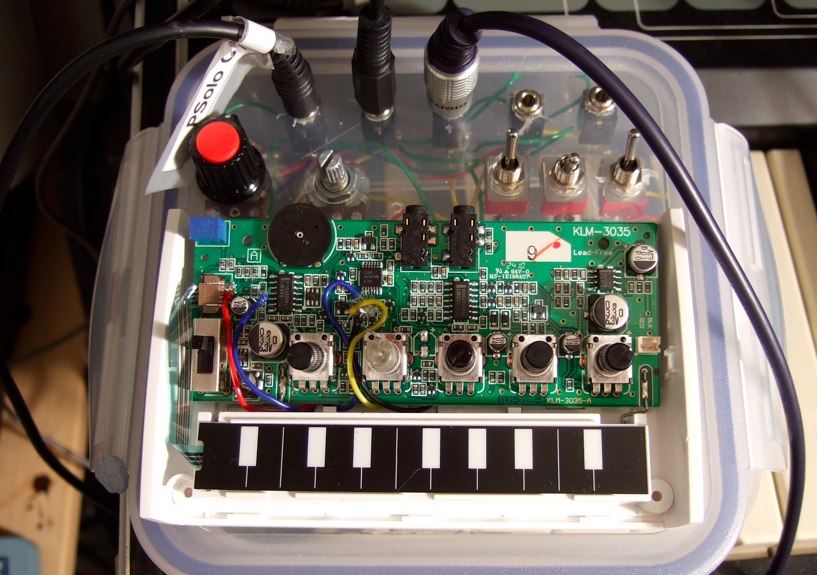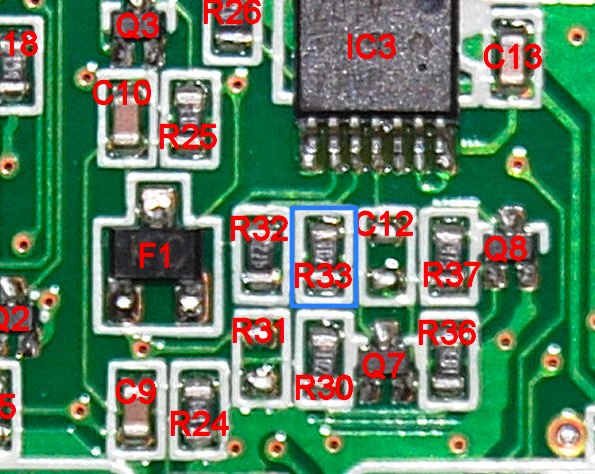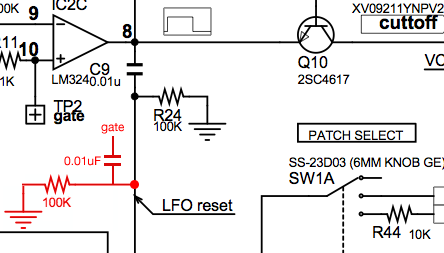Korg Monotron – LFO as one shot EG and gate to trigger LFO reset
I’ve got quite far with the Monotron fiddling, mostly to try and stop the audible click that happens when the gate is turned off.
I’ve put switches on it to disconnect the ribbon keyboard and the gate input, so that the Monotron drones constantly, then doing Beatnic’s mod to turn the LFO into an EG, which means removing the 1k resistor at R33:
…and soldering a couple of wires to the pads of R33. Treat the wire to the top pad as B and the bottom pad as A, and have a look at Beatnic’s diagram – this is what you’ll need to recreate. I just used a small bit of stripboard, but I’m sure you could wire it point-to-point and keep it all in the Monotron case. I used a 0.0047uF cap for C1. (see update at bottom of post)
There might be a cleaner/better way of doing this, but when it’s set up for external CV/gate control, the rightmost switch is set up so that when it’s droning (external gate input off) the gate is passed through to the LFO reset point through a replication of C9/R24 to turn it into a trigger, otherwise the LFO won’t reset until the key is released (see LFO reset point on Korg Monotron for a demo). The simple gate-to-trigger mod is the red section added to the schematic:
Here’s a quick demo – the middle switch of the three is the LFO/EG switch, the right hand one is the gate input on/off switch.
At 1m10s I switch the gate input on and you can hear the click at the end of the note that I was trying to get rid of. It’s more obvious when the filter is tuned low. It’s still really hissy and the pitch knob is ferociously twitchy, but it sounds pretty good. It would be nice to build in some fine tune adjustment for the pitch somewhere.
Update – May 2014
Beatnic’s schematic is long since lost to his website change a while back – it’s my own fault for trying to link back to the source. As people still seem to be interested in how to do this mod, I’ve recreated the schematic from the stripboard in my fiddled-with Monotron. Here it is :
The resistor I’ve labelled Rx essentially replaces and does the same job as R33 when switched in. The 4.7nF cap goes to ground, and the 100k resistor goes to Vdd, which I think is 5v. Let me know if this works in the comments…





24 comments